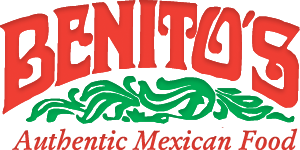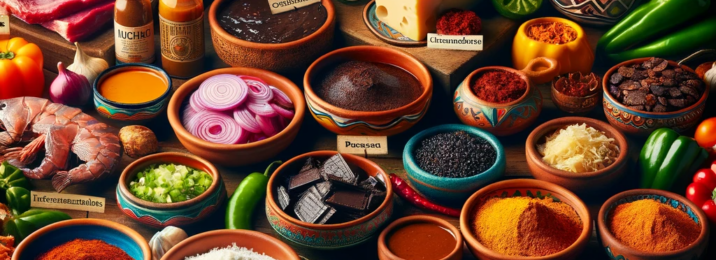The Role of Regional Ingredients in Authentic Mexican Cuisine
The Role of Regional Ingredients in Authentic Mexican Cuisine
Authentic Mexican cuisine is a vibrant tapestry woven from the diverse regional ingredients that form its foundation. Each ingredient carries a story, a cultural significance, and a flavor profile that is indispensable to the authenticity of Mexican gastronomy. As a culinary historian and critic, I assert that the regional ingredients of Mexico are not just components of a recipe but are the soul of its cuisine, reflecting the country’s rich history, varied geography, and the ingenuity of its people.
The Historical Significance of Regional Ingredients
The Indigenous Roots
Mexican cuisine has its roots deeply embedded in the practices of the indigenous peoples. Corn, beans, and squash, known as the “three sisters,” have been the cornerstone of Mexican food for millennia. These crops, along with tomatoes, chili peppers, and cocoa, were cultivated with sophisticated farming techniques that have been passed down through generations.
The Spanish Influence
The Spanish conquest introduced new ingredients such as dairy products, garlic, wheat, and livestock, which melded with the indigenous staples to create the complex flavors we associate with Mexican cuisine today.
UNESCO’s Recognition
In 2010, UNESCO recognized traditional Mexican cuisine as an Intangible Cultural Heritage of Humanity, highlighting the importance of native ingredients and traditional cooking methods that have been preserved over time.
The Cultural Importance of Regional Ingredients
Community and Identity
Regional ingredients are more than just food; they are a symbol of community identity and social bonds. In states like Michoacán, collectives of female cooks use these ingredients to express their community’s identity and reinforce social ties.
Ritual and Celebration
Ingredients like corn hold ritual significance and are integral to celebrations such as the Day of the Dead. The preparation of traditional dishes using these ingredients is a way to honor ancestors and maintain cultural practices.
The Impact on Flavor and Techniques
The Diversity of Chiles
Chiles are central to Mexican cuisine, offering a spectrum of flavors and heat levels. From the mild poblano to the fiery habanero, chiles contribute to the distinctive taste of Mexican dishes.
Nixtamalization
The process of nixtamalization, treating dried corn kernels with lime, is a pre-Columbian technique that enhances the nutritional value and flavor of corn, a staple in Mexican cuisine.
Regional Cooking Methods
Traditional cooking methods like grilling and slow-cooking, such as in barbacoa, impart rich, smoky flavors and tender textures to the dishes, showcasing the versatility of regional ingredients.
The Role of Regional Ingredients in Modern Mexican Cuisine
The Professionalization of Mexican Cuisine
The professionalization of Mexican cuisine has led to a greater appreciation and demand for high-quality, authentic ingredients. Chefs have become cultural ambassadors, promoting the use of local produce and traditional techniques.
Global Influence
Mexican cuisine has influenced global culinary traditions, with techniques like barbacoa inspiring similar cooking methods worldwide. The popularity of street food, such as tacos and quesadillas, has also spread Mexican flavors across the globe.
Regional Variations Within Mexico
Northern Mexico
In the arid north, dishes like carne asada and cabrito reflect the ranching culture, with a focus on grilled meats and a variety of cheeses.
The Yucatan Peninsula
The Yucatan is known for its use of achiote paste and dishes like cochinita pibil, showcasing the unique flavors of the region.
Oaxaca
Oaxaca boasts hearty dishes that highlight the region’s rich tapestry of ingredients and traditions, contributing to the diversity of Mexican cuisine.
The Importance of Fresh Ingredients
Salsas and Garnishes
Fresh ingredients like tomatoes, avocados, cilantro, onions, and lime are essential in salsas and garnishes, adding vibrant flavors and colors to Mexican dishes.
Proteins and Cheeses
A wide range of proteins, including wild game, fish, and seafood, along with traditional Mexican cheeses like queso fresco, play a significant role in the authenticity of regional dishes.
The Future of Mexican Cuisine
Sustainability and Development
The emphasis on traditional cuisine and ingredients is not only a matter of cultural preservation but also a means of sustainable development, supporting local farmers and producers.
Innovation and Adaptation
While chefs continue to innovate and adapt, the essence of Mexican cuisine remains rooted in its regional ingredients and the stories they tell.
FAQs on Regional Ingredients in Mexican Cuisine
Q: Why are regional ingredients important to Mexican cuisine?
A: Regional ingredients are the backbone of Mexican cuisine, providing unique flavors, cultural significance, and historical context that define the authenticity of the country’s gastronomy.
Q: How have regional ingredients influenced modern Mexican cooking?
A: Modern Mexican cooking has seen a resurgence in the use of traditional, regional ingredients as chefs seek to preserve authentic flavors and techniques while also innovating and adapting to contemporary tastes.
Q: Can you find authentic Mexican cuisine outside of Mexico?
A: Yes, authentic Mexican cuisine can be found outside of Mexico, especially in areas with a strong Mexican community. However, regional variations may occur due to the availability of local ingredients and cultural preferences.
Q: What are some key regional ingredients in Mexican cuisine?
A: Key regional ingredients include corn, beans, chili peppers, tomatoes, avocados, and herbs like cilantro, as well as proteins like chicken, pork, beef, and seafood.
Q: How do regional ingredients vary across Mexico?








